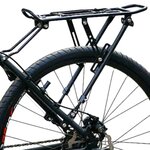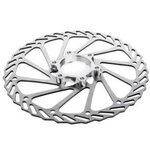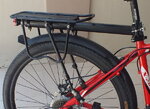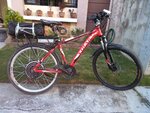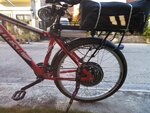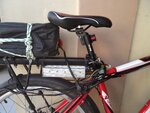I was originally going to use this conversion kit to electrically power a Filipino style pedicab. After posting and getting advice from members here, I realised that I had a lot more to learn so decided to postpone the pedicab project and first convert my 26" MTB to an e-bike.
The conversion kit was a done deal. I bought it on special from China on for about USD260 (including delivery to Cebu, Philippines) rather than the normal price of USD380 - no returns and no warranty. The kit arrived today. The kit consists of:
I need to provide the batteries, charger and a rear carry rack for the batteries.
Overall the quality appear to be very good for the price.
The MTB this is to be fitted on has 26" wheels, alloy frame, 3 x 7 speeds chain gears, disk brakes. I also purchased this on special from China for a little under USD150 (including delivery to Cebu. Philippines).
More tomorrow on what I have discovered and some of the initial problems that (I think) I have solved.
The conversion kit was a done deal. I bought it on special from China on for about USD260 (including delivery to Cebu, Philippines) rather than the normal price of USD380 - no returns and no warranty. The kit arrived today. The kit consists of:
- 48V x 1000W brushless non-geared hub motor on a 26" x 1.75" alloy wheel with 6-speed freewheel sprockets
- 48V x 1000W control box
- 2 x brake levers with electronic cut-outs
- 5-magnet PSA unit
- Thumb type speed control
- Bag for batteries
- All associated wiring with 35A fuse.
I need to provide the batteries, charger and a rear carry rack for the batteries.
Overall the quality appear to be very good for the price.
The MTB this is to be fitted on has 26" wheels, alloy frame, 3 x 7 speeds chain gears, disk brakes. I also purchased this on special from China for a little under USD150 (including delivery to Cebu. Philippines).
More tomorrow on what I have discovered and some of the initial problems that (I think) I have solved.
Last edited:
